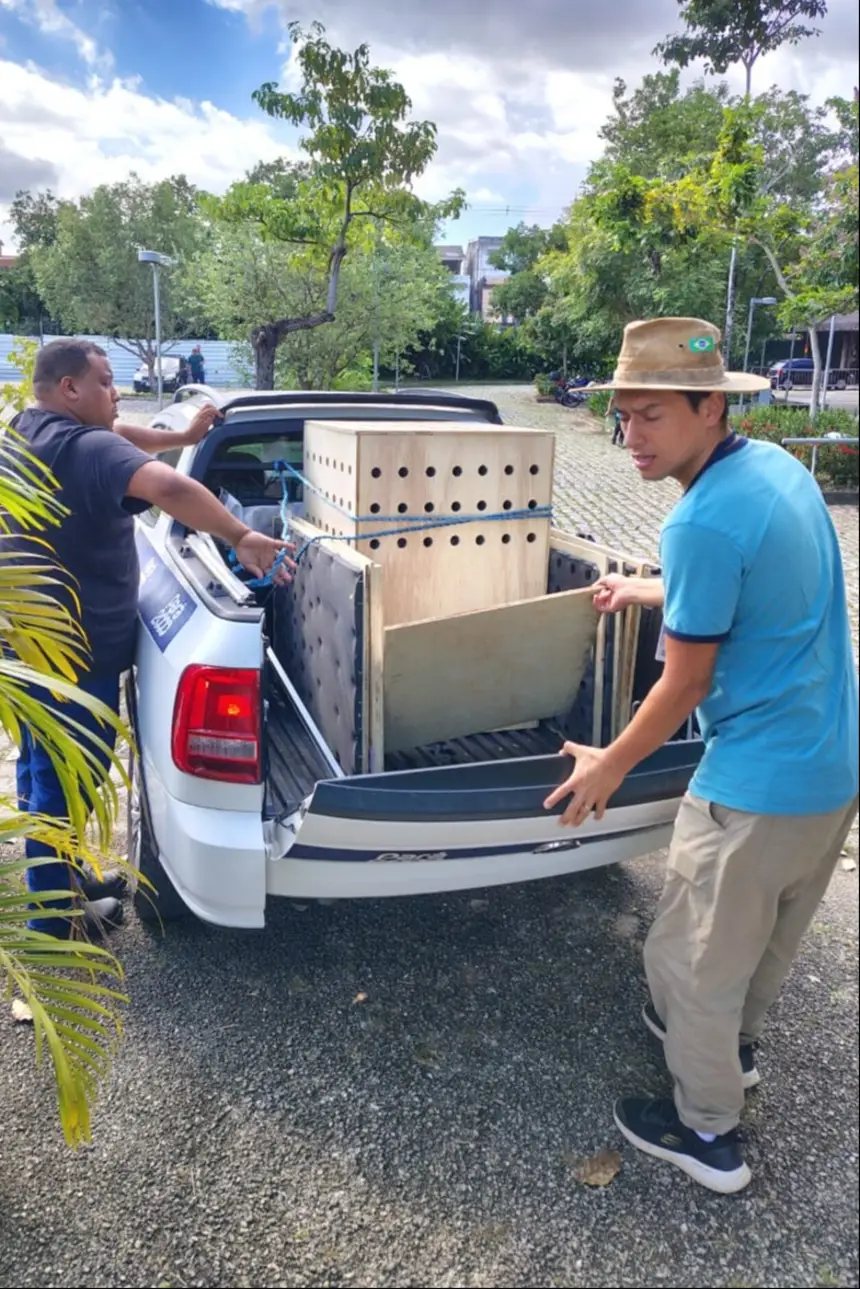New flamingos arrive at Mangal das Garças to strengthen the flock and encourage reproduction
The action is part of an exchange program with the Zooparque Itatiba (SP), which also includes the exchange of technical knowledge and genetic strengthening of the breeding stock.

Two flamingos arrived at the Zoobotanical Park Mangal das Garças in Belém, coming from the Zooparque Itatiba (SP). After a period of quarantine and adaptation, the birds were integrated into the park's lake to strengthen the local flock and stimulate the reproduction of the species.
The action is part of an exchange program between the two institutions, which also includes the exchange of technical knowledge and genetic strengthening of the breeding stock. Recently, two turtles raised at Mangal were transferred to the Itatiba institution.
According to veterinarian Camilo González, who is part of the technical team at Mangal, the presence of the new flamingos is important for the reproductive behavior of the species. “In the natural environment, these birds form flocks of about 30 individuals to start reproduction. With the arrival of the new residents, the number of flamingos at Mangal increases to 19, which should provide more security and encouragement for the formation of pairs and egg-laying,” he explains.
Mangal das Garças has invested in various strategies to encourage the reproduction of the birds. Among them is the provision of more protein-rich feed, the construction of mud nests that mimic those found in nature, and the recent installation of mirrors in the flamingo enclosure, a technique that has sparked the curiosity of visitors. Fixed along the shores of Lake Cavername, the mirrors create the illusion of a larger flock, which encourages breeding.
The partnership with Zooparque Itatiba began in 2023 and has already promoted the exchange of animals and in-person technical training. In addition to the two flamingos, Mangal received two black-necked swans, while sending twelve scarlet ibises, two jabirus, and two turtles to the São Paulo park.

Curiosity - The new residents of Mangal are two Chilean flamingos (Phoenicopterus chilensis), elegant birds that can measure up to 1.07 m and weigh about 2.3 kg. The scientific name comes from the Greek phoinikopteros (with red wing feathers) and from Latin chilensis (originating from Chile). They have a pink bill at the base and black at the tip, pink legs with darker joints, and when young, they have grayish plumage. Their natural distribution ranges from Peru to Tierra del Fuego, including Chile, Bolivia, Argentina, and in Brazil, the South and Southeast regions. The species is facing population decline, making its preservation and reproduction even more important.
Mangal das Garças is managed by the Social Organization Pará 2000, through the State Secretariat of Tourism and the Government of Pará.
Service - Visiting hours at the Zoobotanical Park Mangal das Garças are from Tuesday to Sunday, from 8 am to 6 pm. On Mondays, the park is closed for maintenance. The space is located at Rua Carneiro da Rocha, s/n, in the Cidade Velha neighborhood, in Belém.
Text: Beatriz Santos/Ascom OS Pará 2000










